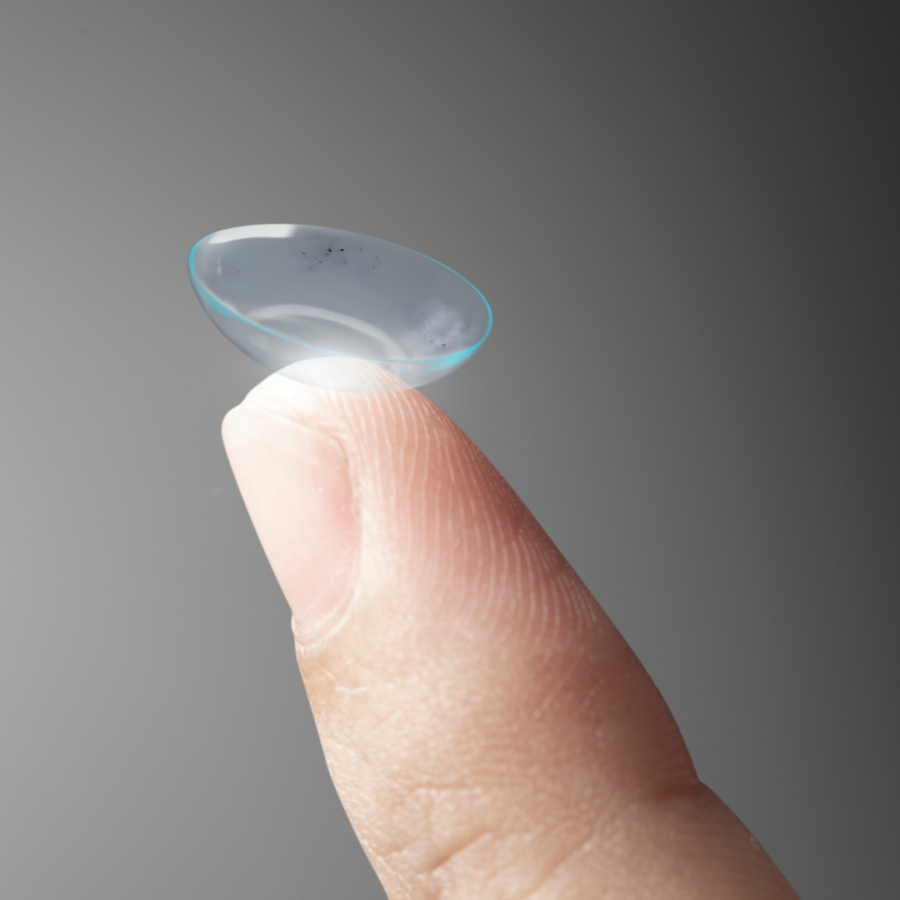The use of contact lenses has become incredibly popular worldwide, with over 85 million wearers today. Although generally safe, contact lenses can sometimes lead to serious eye complications if not handled with care. One of the most severe complications is the corneal ulcer, a type of infection-driven wound on the cornea that can result in permanent vision loss if left untreated. This article delves into the causes, risk factors, symptoms, and preventive measures of contact lens-related corneal ulcers to help users maintain safe lens practices and preserve their eye health.
A corneal ulcer is an open sore that forms on the cornea, often due to an infection that breaks through the corneal surface. Contact lens wearers are at a heightened risk of developing this condition, especially if they wear their lenses for extended periods or overnight, have poor hygiene habits, or do not follow specific guidelines for lens use. Corneal ulcers can develop quickly, with infections like Pseudomonas aeruginosa capable of causing significant vision impairment within just 24 hours if untreated (Loh & Agarwal, 2014).
Table of Contents
Several behaviors and conditions increase the likelihood of developing a corneal ulcer:
Cosmetic Contact Lens Use: Patients who wear contact lenses primarily for cosmetic purposes are at a higher risk of infectious keratitis due to not being aware of and/or not following the FDA recommendations for the proper care of contact lenses, and unaware of the side effects. These users are also at an increased risk of mechanical trauma or complications like corneal infections (Mohammad-Rabei, Feizi, & Sheibani, 2014).
Overnight Lens Use: One of the main culprits is wearing lenses while sleeping. During sleep, oxygen flow to the cornea is restricted, especially with lenses that may already limit oxygen transmission. This can lead to corneal hypoxia, where reduced oxygen levels cause tissue breakdown, and creates a more susceptible environment for infection.
Extended Wear: Continuous wear over extended periods, like using the same lenses for multiple days, can contribute to bacterial buildup and increase the chances of an ulcer forming. The risk is particularly high for users of soft, extended-wear lenses, with a reported ulcer incidence rate of 13.3–20.9 per 10,000 wearers (Loh & Agarwal, 2014).
Poor Hygiene: Failing to maintain proper lens hygiene is a major factor in developing corneal ulcers. This includes not washing hands before handling lenses, reusing cleaning solutions, or using contaminated cases and cleansers, all of which can introduce harmful bacteria and other microorganisms to the eye.
Personal and Environmental Factors: Certain personal habits, like smoking, also increase the risk of corneal ulcers. Dry environments, dust, and exposure to irritants such as smoke can also exacerbate dryness and infection risk for lens users.
Contact lens-related corneal ulcers can cause a range of symptoms, and early recognition is essential for preventing serious complications:
Severe Symptoms: As the infection progresses, more intense symptoms appear, including eye redness, severe pain, sensitivity to light (photophobia), eye discharge, and blurry vision. In the most serious cases, a pus-like buildup (hypopyon) can form in the eye, a clear sign of a potentially sight-threatening infection.
Mild Symptoms: In the beginning stages, users might experience discomfort, a feeling of something in the eye, and excessive tearing. These symptoms may resemble dry eye or mild irritation, so they can sometimes be overlooked.
If a corneal ulcer is suspected, it is critical to seek immediate medical care. An eye care professional will perform an examination with a slit-lamp microscope and may apply fluorescein dye to detect surface irregularities. Additionally, samples might be taken from the eye to identify the specific organism responsible, guiding the choice of treatment. Treatment generally involves removing the contact lens and applying antibiotic or antifungal eye drops to control the infection. Severe cases may require systemic antibiotics or antifungal medications.
Prevention is crucial, and by following these guidelines, contact lens users can significantly reduce the risk of corneal ulcers:
Be Cautious with Symptoms: If you notice any redness, discomfort, or vision changes, remove your lenses immediately and seek professional care. Early intervention can make a significant difference in preventing lasting damage.
Avoid Overnight Wear: Unless specifically prescribed for overnight wear, remove lenses before going to sleep. Extended-wear lenses should still be removed regularly for cleaning and disinfection.
Practice Good Hygiene: Always wash your hands before touching lenses, and ensure lenses and cases are cleaned according to manufacturer instructions. Use fresh solution each time and avoid topping off or reusing old solution.
Regular Replacement: Follow the recommended replacement schedule for both lenses and cases. Extended use of disposable lenses or lens cases can lead to a higher risk of contamination.
Limit Environmental Risks: Avoid wearing lenses in dry or dusty environments or during activities involving water exposure, such as swimming, to prevent contamination.
If you’re tired of the risks and maintenance involved with contact lenses, LASIK could be the perfect alternative to help you see clearly without the daily hassle. LASIK is a quick, safe, and effective laser vision correction procedure designed to reduce or eliminate dependence on contacts and glasses. LASIK can reduce or even eliminate contact-related symptoms like dry eyes, the risk of infection, and constant upkeep. LASIK offers long-lasting results so you can enjoy clear vision with freedom and confidence. Ready to explore your options? Schedule a FREE LASIK consultation with a LASIK.com Network Provider today and discover if you’re a candidate for life-changing vision correction!
As contact lens use grows, the potential for complications like corneal ulcers is also rising. Awareness of proper lens care, hygiene, and the risks associated with extended wear can help users prevent serious infections. Early diagnosis and treatment are essential, so don’t ignore discomfort or unusual symptoms related to contact lens use. By following best practices and prioritizing eye health, contact lens wearers can enjoy the benefits of lenses without compromising their vision.



